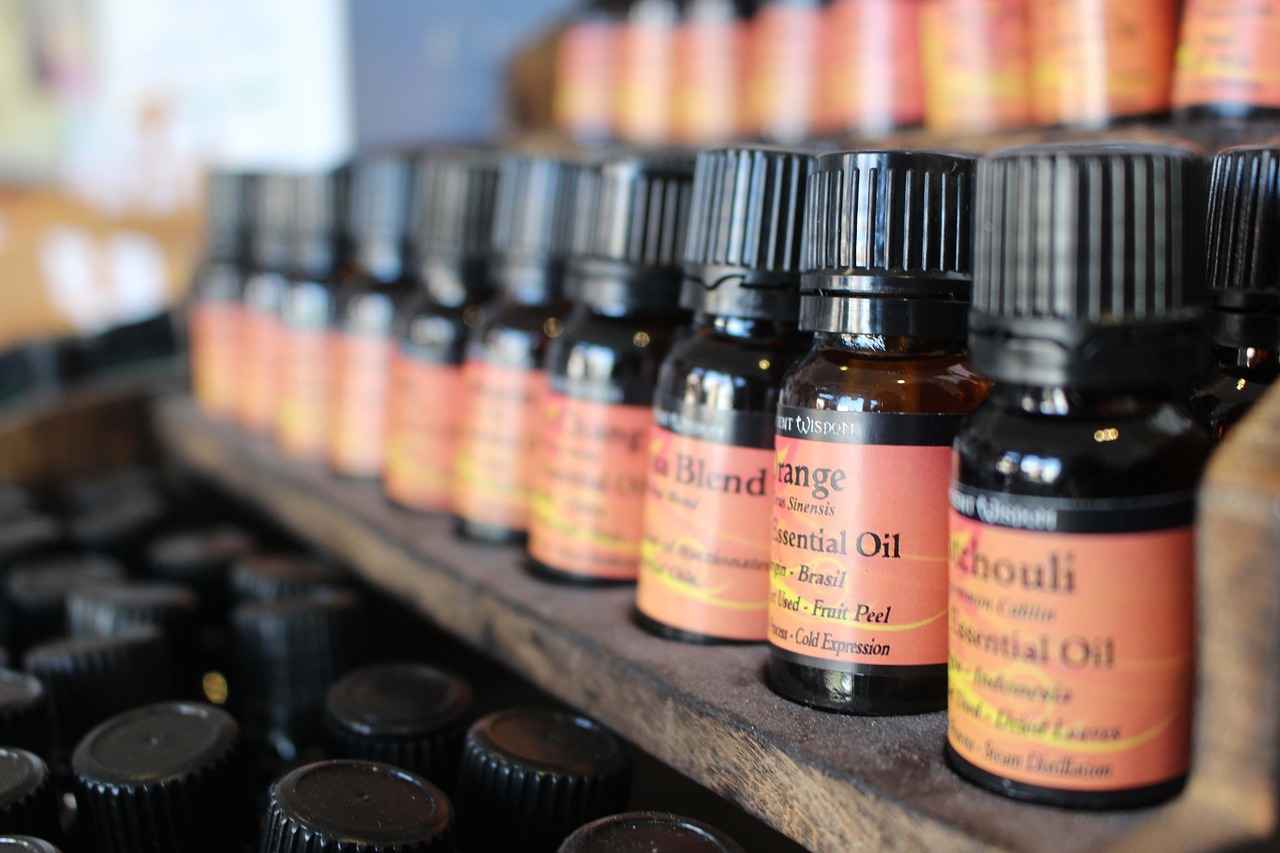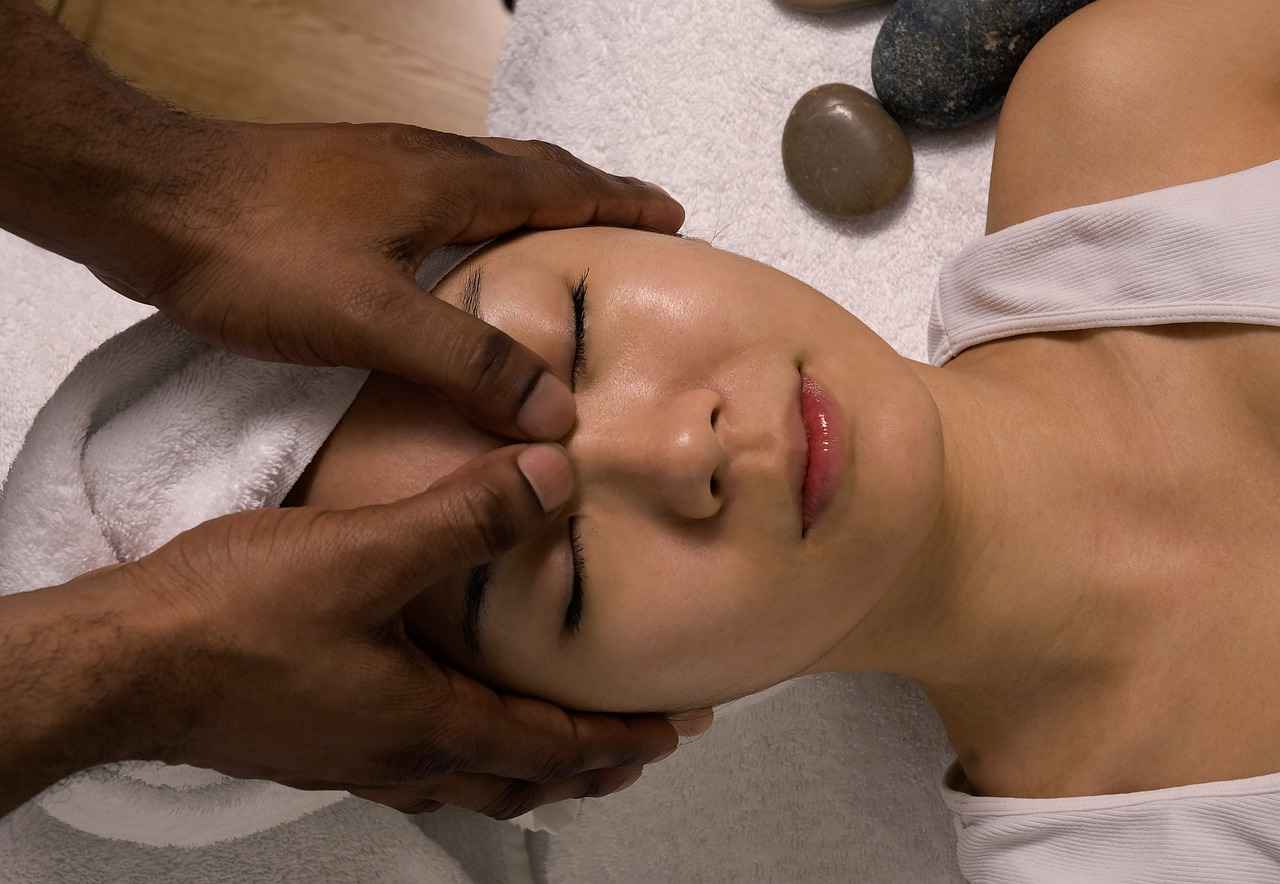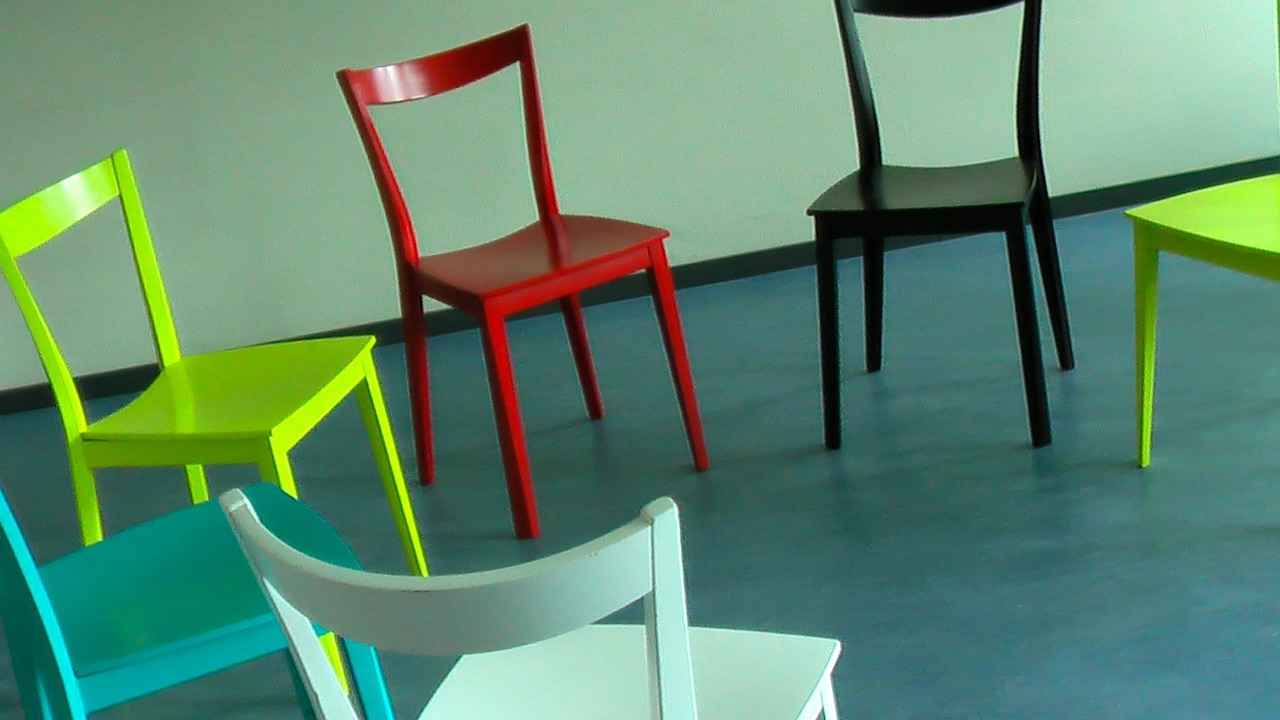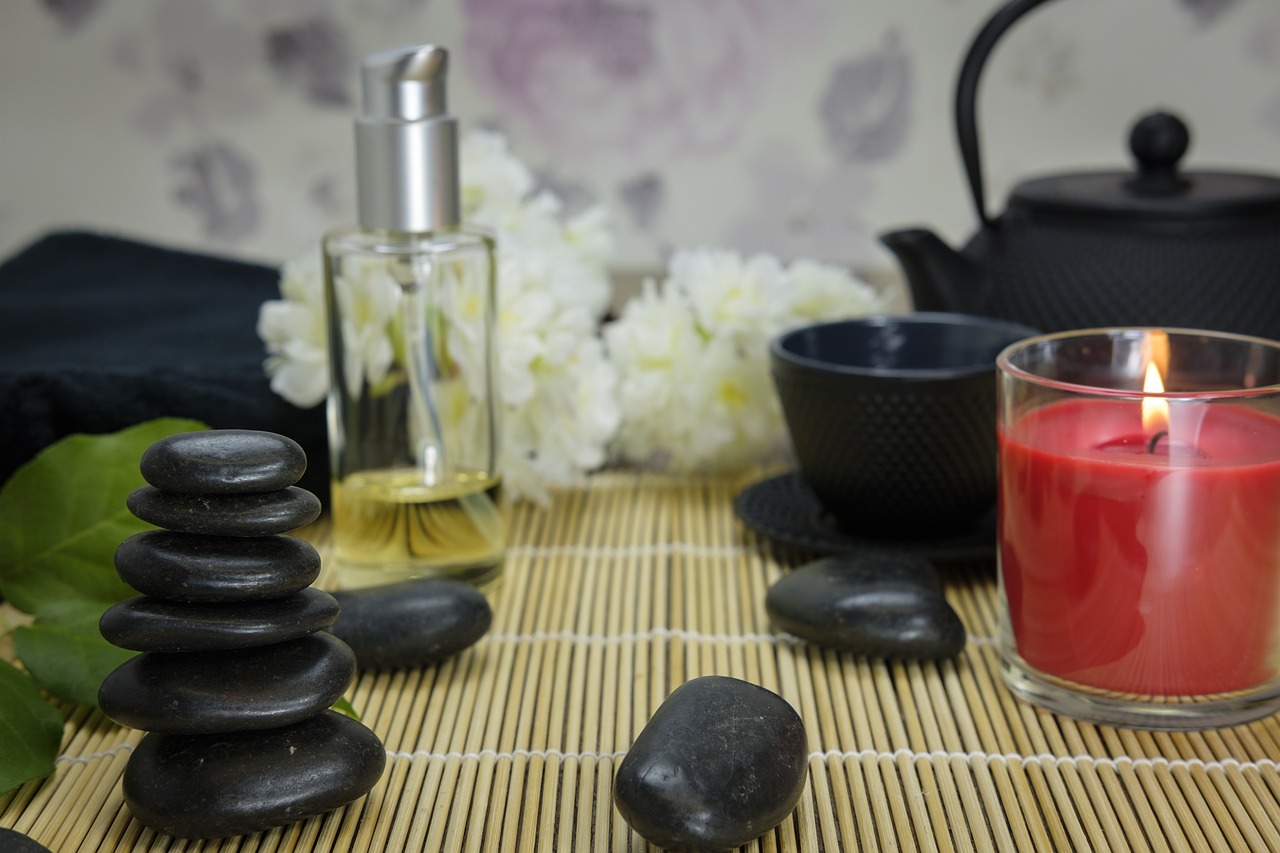This article aims to uncover the myths and realities surrounding Asian massage therapies, providing insights into their numerous benefits, diverse techniques, and rich cultural significance, while addressing common misconceptions that often cloud understanding.
Asian massage therapies boast a long history, with roots tracing back to ancient practices in countries such as China, India, and Thailand. Each culture has contributed unique techniques and philosophies that reflect their beliefs about health and wellness. For instance, traditional Chinese medicine emphasizes the balance of energy, while Indian Ayurveda focuses on holistic well-being.
- Shiatsu: A Japanese technique utilizing finger pressure along energy pathways.
- Thai Massage: A dynamic blend of stretching and acupressure, promoting flexibility.
- Tui Na: A Chinese therapeutic approach focusing on energy channels and pain relief.
Understanding these techniques can help individuals appreciate their distinct approaches and therapeutic benefits. For example, Shiatsu not only promotes relaxation but also addresses specific health concerns through its acupressure techniques. Similarly, Thai massage combines elements of yoga and acupressure to enhance both physical and emotional well-being.
Despite their effectiveness, many misconceptions persist about Asian massage therapies. One common myth is that these treatments are solely for relaxation. In reality, they often target specific ailments, providing holistic healing. Another misconception is that all Asian massages are the same; however, each technique is rooted in different cultural traditions and offers unique benefits.
In conclusion, exploring Asian massage therapies reveals a wealth of knowledge that transcends mere relaxation. By debunking myths and understanding the origins and benefits of these practices, individuals can make informed choices about their wellness journeys.

The Origins of Asian Massage Therapies
Asian massage therapies are not just mere relaxation techniques; they are steeped in history and tradition. The origins of these therapies can be traced back thousands of years to ancient civilizations in Asia, particularly in countries such as China, India, and Thailand. Each culture has contributed unique practices and philosophies that reflect their understanding of the body, mind, and spirit.
In China, traditional practices like Tui Na have been used for centuries as part of Traditional Chinese Medicine (TCM). Tui Na focuses on the body’s energy channels, or meridians, and employs various hand techniques to promote healing and balance. This ancient practice is deeply rooted in the belief that physical health is closely tied to the flow of energy within the body.
India offers its own rich tapestry of massage techniques, most notably Ayurvedic massage. This holistic approach emphasizes the balance of the body’s energies, known as doshas. Ayurvedic massage often incorporates herbal oils and specific strokes designed to detoxify the body and enhance overall well-being. This practice reflects a profound understanding of the interconnectedness of body, mind, and environment.
Thailand is renowned for its traditional Thai massage, which combines elements of yoga, acupressure, and energy work. This technique is characterized by its dynamic stretches and rhythmic compressions, aimed at promoting flexibility and relieving tension. Thai massage is not only a physical practice but also a spiritual one, often performed in a serene environment that enhances the overall experience.
Across these cultures, the common thread is the belief in the body’s innate ability to heal itself. By understanding the origins of these diverse techniques, practitioners and clients alike can appreciate the cultural significance and therapeutic benefits that Asian massage therapies offer.

Common Types of Asian Massage Techniques
Asian massage techniques are renowned for their unique approaches to wellness, each offering distinct benefits rooted in cultural traditions. This section will explore three popular methods: Shiatsu, Thai massage, and Tui Na. By understanding their individual characteristics and therapeutic advantages, one can appreciate the diverse landscape of Asian massage therapies.
- Shiatsu: Originating from Japan, Shiatsu translates to “finger pressure.” This technique involves applying pressure along specific energy pathways, known as meridians, to promote healing and relaxation. Shiatsu practitioners utilize their fingers, palms, and sometimes elbows to stimulate these points, enhancing the body’s natural healing processes.
- Thai Massage: A dynamic blend of acupressure and assisted yoga stretches, Thai massage is often referred to as “yoga for lazy people.” Practitioners guide clients through a series of stretches while applying pressure to energy lines. This technique not only encourages flexibility but also helps release physical and emotional tension, making it a holistic approach to well-being.
- Tui Na: As a cornerstone of traditional Chinese medicine, Tui Na focuses on manipulating the body’s energy channels. This technique employs various hand movements, such as kneading, rolling, and pressing, to facilitate energy flow and alleviate pain. Tui Na is particularly effective for treating musculoskeletal issues and enhancing overall vitality.
Each of these techniques embodies a unique philosophy and methodology, reflecting the rich cultural heritage from which they arise. Their therapeutic benefits extend beyond mere relaxation, addressing various health concerns and promoting overall wellness. Whether seeking relief from stress, improving flexibility, or enhancing energy flow, exploring these Asian massage techniques can lead to profound benefits for both body and mind.
Shiatsu: The Art of Japanese Pressure Massage
Shiatsu is a renowned Japanese massage technique that emphasizes the application of finger pressure along specific energy pathways, known as meridians, to facilitate healing and promote relaxation. This practice is deeply rooted in the principles of traditional Chinese medicine, which views the body as an interconnected system of energy flow.
The term Shiatsu translates to “finger pressure,” and it incorporates a variety of techniques, including stretching, kneading, and pressing. Practitioners use their fingers, palms, and sometimes elbows to apply pressure to various points on the body, aiming to restore balance and harmony within the individual. This holistic approach not only addresses physical ailments but also enhances emotional well-being.
One of the key benefits of Shiatsu is its ability to alleviate stress and promote relaxation. By targeting specific pressure points, Shiatsu can help release tension accumulated in the body, leading to a profound sense of calm. Furthermore, regular sessions can improve circulation, enhance flexibility, and boost overall energy levels, making it an effective treatment for various health concerns.
Shiatsu techniques are versatile and can be tailored to meet the unique needs of each client. For instance, practitioners may focus on areas of discomfort or address specific health issues, such as headaches or digestive problems. This adaptability makes Shiatsu a valuable addition to any wellness routine.
Moreover, Shiatsu is not merely a physical treatment; it encourages clients to engage in their own healing process. By fostering a deeper awareness of their bodies and energy levels, individuals can cultivate a greater understanding of their health and well-being.
In summary, Shiatsu is a powerful Japanese massage therapy that combines ancient wisdom with modern therapeutic practices. Its emphasis on energy pathways and holistic healing makes it a unique and effective approach to wellness.
Benefits of Shiatsu Massage
Simplifying the Benefits of Shiatsu Massage
Shiatsu, a traditional Japanese massage technique, is not just a form of relaxation but a holistic practice with profound benefits for both the body and mind. By employing finger pressure along specific energy pathways, Shiatsu aims to restore balance and promote healing. This ancient practice is rooted in the principles of traditional Chinese medicine, making it a valuable tool for enhancing overall well-being.
- Stress Relief: One of the most significant benefits of Shiatsu massage is its ability to alleviate stress. The gentle pressure applied during the session helps to release tension in the muscles and calm the nervous system, leading to a state of relaxation and tranquility.
- Improved Circulation: Shiatsu stimulates blood flow throughout the body. Enhanced circulation not only helps to nourish the organs and tissues but also aids in the removal of toxins, contributing to better health.
- Enhanced Emotional Well-Being: Shiatsu massage can play a crucial role in emotional health. The deep relaxation achieved during a session can lead to a reduction in anxiety and depression, fostering a sense of emotional balance and clarity.
- Pain Relief: Many individuals seek Shiatsu for its pain-relieving properties. By targeting specific pressure points, Shiatsu can help alleviate chronic pain conditions such as back pain, headaches, and joint discomfort.
- Increased Flexibility: The stretching techniques incorporated in Shiatsu not only promote relaxation but also enhance flexibility and range of motion. This is particularly beneficial for those engaged in physical activities or sports.
In summary, Shiatsu massage offers a comprehensive approach to health that encompasses physical, emotional, and mental well-being. Its unique blend of pressure and stretching techniques makes it a versatile and effective therapy for many individuals seeking to improve their overall quality of life.
Shiatsu Techniques Explained
Simplifying Shiatsu Techniques
Simplifying the intricacies of Shiatsu can significantly enhance a client’s understanding and appreciation of this powerful therapy. Shiatsu, a traditional Japanese massage technique, draws from ancient practices and is rooted in the principles of traditional Chinese medicine. It emphasizes the balance of energy, or Qi, within the body, aiming to restore harmony and promote overall wellness.
Key Techniques in Shiatsu
- Acupressure: This technique involves applying pressure to specific points on the body, known as meridians, which correspond to various organs and systems. By stimulating these points, Shiatsu practitioners can alleviate pain, reduce stress, and enhance bodily functions.
- Stretching: Incorporating gentle stretching into the Shiatsu practice helps improve flexibility and range of motion. This technique not only relaxes the muscles but also aids in releasing tension and blockages in the energy pathways.
- Palming and Thumbing: Shiatsu practitioners use their palms and thumbs to apply pressure in rhythmic patterns, allowing for a deeper release of tension. This method can be adjusted based on the client’s comfort level and specific needs.
Benefits of Understanding Shiatsu Techniques
By understanding these techniques, clients can better appreciate how Shiatsu addresses a variety of health concerns, including chronic pain, stress relief, and improved circulation. Recognizing the connection between the physical and energetic aspects of their health empowers clients to engage more fully in their healing journey.
Holistic Approach to Health
Shiatsu is not merely a physical treatment; it embodies a holistic approach to health that considers the emotional and spiritual dimensions of well-being. Clients who are informed about the techniques used in Shiatsu can cultivate a deeper connection with their bodies, enhancing the overall effectiveness of the therapy.
Thai Massage: A Unique Blend of Stretching and Pressure
Thai massage is a holistic therapy that intricately weaves together several ancient techniques, creating a unique experience that promotes both physical and emotional well-being. This traditional practice, rooted in Buddhist philosophy, emphasizes the importance of energy flow within the body, making it a powerful tool for healing.
At the core of Thai massage lies a combination of acupressure, yoga-like stretching, and energy work. These elements work synergistically to enhance flexibility, alleviate tension, and encourage relaxation. The therapist uses their hands, feet, elbows, and knees to apply pressure to specific points along the body’s energy pathways, known as Sen lines. This targeted pressure not only helps to release physical blockages but also addresses emotional stress that can manifest in the body.
One of the most distinctive features of Thai massage is its incorporation of dynamic stretches. These stretches are similar to yoga poses and are designed to improve flexibility and range of motion. The client remains fully clothed, typically in loose-fitting attire, which allows for unrestricted movement during the session. This aspect of Thai massage not only enhances physical benefits but also fosters a deep sense of relaxation and mindfulness.
Moreover, Thai massage is known for its ability to promote emotional balance. By addressing both physical and emotional blockages, practitioners believe that this therapy can lead to a more harmonious state of being. Many clients report feeling a profound sense of well-being and clarity after a session, as the treatment encourages the release of pent-up emotions and stress.
In summary, Thai massage is more than just a physical treatment; it is a comprehensive approach to wellness that harmonizes body, mind, and spirit. By combining acupressure, stretching, and energy work, it offers a unique and effective way to promote overall health.

Understanding Tui Na: Chinese Medical Massage
Tui Na, a cornerstone of traditional Chinese medicine, is a therapeutic massage technique that emphasizes the flow of Qi (energy) within the body. Unlike Western massage therapies that primarily focus on muscle relaxation, Tui Na aims to restore balance and harmony within the body’s energy channels, known as meridians. This practice has been utilized for thousands of years in China and is deeply rooted in ancient philosophies and holistic health approaches.
The techniques employed in Tui Na are diverse and can include kneading, pressing, rolling, and stretching. Each of these methods is designed to target specific health issues by stimulating acupuncture points and enhancing the flow of Qi. Practitioners often tailor their approach based on the individual’s unique health conditions, making Tui Na a highly personalized form of therapy.
One of the primary benefits of Tui Na is its effectiveness in alleviating various forms of pain, such as back pain, joint pain, and headaches. By addressing the root causes of discomfort rather than just the symptoms, Tui Na promotes long-term healing. Additionally, this technique can enhance joint mobility and improve overall energy levels, contributing to a sense of well-being.
Moreover, Tui Na is not solely a physical treatment; it also plays a significant role in emotional and mental health. Many clients report feeling a deep sense of relaxation and emotional release following a session, which can be attributed to the holistic nature of this therapy.
In summary, Tui Na represents a unique blend of physical manipulation and energetic balancing, making it a valuable component of traditional Chinese medicine. Its ability to address both physical and emotional ailments underscores its importance and effectiveness as a therapeutic practice.
Health Benefits of Tui Na
Tui Na, a cornerstone of traditional Chinese medicine, is more than just a massage technique; it is a comprehensive healing practice that has been utilized for centuries. This ancient form of therapy focuses on the body’s energy channels, aiming to restore balance and promote overall health. By employing various hand techniques, Tui Na practitioners can effectively target specific ailments and enhance the body’s natural healing processes.
Relief from Pain and Discomfort
One of the most significant is its ability to relieve pain. Whether it’s chronic back pain, headaches, or muscle soreness, Tui Na techniques such as kneading, rolling, and acupressure can effectively alleviate discomfort. The application of pressure along meridian points helps to release tension and improve circulation, which can lead to substantial pain relief.
Enhanced Joint Mobility
Another notable advantage of Tui Na is its capacity to improve joint mobility. The techniques employed in Tui Na are designed to stretch and manipulate the joints, increasing flexibility and range of motion. This is particularly beneficial for individuals suffering from arthritis or other joint-related issues, as it promotes better movement and reduces stiffness.
Boosting Energy Flow
Tui Na is also recognized for its role in enhancing overall energy flow within the body. By stimulating the body’s meridians, Tui Na helps to balance the flow of Qi (energy), which is essential for maintaining health. Improved energy flow can lead to increased vitality, better mood, and an overall sense of well-being.
Holistic Approach to Health
In addition to its physical benefits, Tui Na addresses emotional and mental health. The therapeutic touch and focused techniques used in Tui Na can help reduce stress and anxiety, fostering a sense of relaxation and calm. This holistic approach makes Tui Na a valuable treatment option for those seeking comprehensive wellness.
Overall, Tui Na stands out as a versatile and effective treatment modality within traditional Chinese medicine, offering a range of benefits that extend beyond mere relaxation.
Tui Na Techniques and Applications
Tui Na is a remarkable form of traditional Chinese massage that employs a variety of techniques to promote healing and wellness. Among these techniques, kneading and rolling stand out for their effectiveness in addressing specific health issues. Each technique serves a distinct purpose and can be tailored to meet individual needs, showcasing the versatility of Tui Na in therapeutic applications.
Kneading involves applying pressure to the muscles and soft tissues, mimicking the action of kneading dough. This technique helps to relieve muscle tension, enhance blood circulation, and promote relaxation. By focusing on specific areas of discomfort, practitioners can effectively alleviate pain and restore balance within the body. Kneading is particularly beneficial for individuals suffering from chronic pain conditions, as it can help to release tight muscles and improve overall mobility.
Rolling is another essential technique in Tui Na, characterized by a gentle, rhythmic motion that resembles rolling a ball over the skin. This method stimulates the flow of Qi (vital energy) and blood throughout the body, facilitating the body’s natural healing processes. Rolling can be particularly effective in addressing issues such as fatigue and stress, as it promotes relaxation and a sense of well-being. It is also useful for enhancing flexibility, making it an excellent choice for athletes and those engaged in physical activities.
In addition to kneading and rolling, Tui Na incorporates a variety of other techniques, including pressing, tapping, and stretching. Each of these methods plays a crucial role in balancing the body’s energy and addressing specific health concerns. For instance, pressing techniques can target acupressure points to alleviate headaches, while stretching can improve joint mobility and relieve stiffness.
The adaptability of Tui Na techniques makes it a valuable tool in holistic health practices. By customizing treatments to address individual health issues, practitioners can enhance the effectiveness of the therapy, ensuring that clients receive the most appropriate care for their unique needs.

Debunking Common Myths About Asian Massage
Asian massage therapies have gained popularity worldwide, yet many people still hold misconceptions about their effectiveness and purpose. This section aims to clarify these misunderstandings and provide accurate information about the diverse benefits and techniques associated with these ancient practices.
Myth: Asian Massage is Only for Relaxation
While it is true that relaxation is a significant benefit of Asian massage therapies, they serve a much broader purpose. Techniques such as Shiatsu and Tui Na are specifically designed to address various health issues, including chronic pain, muscle tension, and emotional stress. Many practitioners use these therapies to promote holistic healing, which encompasses both physical and emotional well-being.
Myth: All Asian Massage is the Same
Another common misconception is that all Asian massage techniques are identical. In reality, each type has its unique approach and philosophy. For example, Thai massage incorporates yoga-like stretches and acupressure, while Shiatsu focuses on finger pressure along energy pathways. Understanding these differences is crucial for individuals seeking the appropriate therapy for their specific needs.
Myth: Asian Massage is Painful
Some people believe that Asian massage therapies are inherently painful due to their deep tissue techniques. However, skilled practitioners tailor their approach based on individual pain thresholds and preferences. The goal is to relieve discomfort, not to cause it. Many clients report feeling a sense of relief and rejuvenation after a session.
Myth: You Need to Be Flexible for Thai Massage
Many potential clients shy away from Thai massage because they think they must be flexible. In reality, this therapy is designed to enhance flexibility, and practitioners adjust their techniques to accommodate clients of all fitness levels. Whether you are a seasoned yogi or someone who rarely stretches, Thai massage can be beneficial.
By debunking these myths, individuals can make informed decisions about their health and wellness journeys. Understanding the true nature and benefits of Asian massage therapies can lead to a more enriching experience and improved overall well-being.
Myth: Asian Massage is Only for Relaxation
When discussing Asian massage therapies, a common misconception is that they are solely for relaxation. While it’s true that these therapies provide significant stress relief, their benefits extend far beyond mere relaxation. In fact, many Asian massage techniques are deeply rooted in ancient medical practices and are designed to address specific health issues.
For instance, Tui Na, a traditional Chinese massage, focuses on the body’s energy channels, employing various hand techniques to alleviate pain and promote healing. This method is widely recognized for its effectiveness in treating conditions such as chronic pain, muscle tension, and even digestive disorders. Practitioners use targeted pressure to stimulate specific points on the body, thereby enhancing the flow of Qi (energy) and restoring balance.
Similarly, Shiatsu massage, which originates from Japan, is based on the principles of traditional Chinese medicine. It utilizes finger pressure along energy pathways to not only relax the body but also to address various ailments. Shiatsu is particularly effective for conditions like stress-related disorders, insomnia, and headaches, demonstrating its therapeutic potential.
Moreover, Thai massage combines elements of acupressure and yoga-like stretching, making it a holistic approach to both physical and emotional well-being. This technique aids in improving flexibility, relieving muscle tension, and addressing emotional blockages, thereby promoting a sense of overall health.
In summary, while relaxation is a significant aspect of Asian massage therapies, it is essential to recognize their broader health benefits. These therapies can effectively address specific health issues, promoting both physical and emotional healing. By understanding the diverse techniques and their applications, individuals can make informed choices about incorporating these therapies into their wellness routines.
Myth: All Asian Massage is the Same
When it comes to Asian massage therapies, a common misconception is that they are all the same. In reality, each type of Asian massage has its own distinct techniques and philosophies, deeply rooted in the cultural and healing traditions of the regions from which they originate. This diversity not only enhances the therapeutic experience but also addresses a variety of physical and emotional needs.
For instance, Shiatsu, a Japanese massage technique, utilizes finger pressure along specific energy pathways to promote healing. It is influenced by traditional Chinese medicine and emphasizes the balance of energy within the body. On the other hand, Thai massage incorporates yoga-like stretches and acupressure, providing a unique blend of physical manipulation and energy work that enhances flexibility and relaxation.
Another notable technique is Tui Na, a traditional Chinese massage that focuses on the body’s energy channels. It employs various hand techniques to alleviate pain and restore balance, showcasing its effectiveness in addressing specific health concerns. Each of these methods reflects the cultural significance and historical context of its origin, illustrating that they are not interchangeable.
- Shiatsu: Focuses on energy pathways through finger pressure.
- Thai Massage: Combines stretching and acupressure for flexibility.
- Tui Na: Targets energy channels to relieve pain and promote balance.
Moreover, the philosophies behind these therapies vary significantly. For example, while Shiatsu emphasizes the flow of energy and its impact on physical health, Thai massage incorporates elements of spirituality and mindfulness, aiming for a holistic balance of body and mind.
In summary, the notion that all Asian massage therapies are the same is a myth. Understanding the unique characteristics and benefits of each technique allows individuals to choose the most appropriate therapy for their specific needs, ensuring a more effective and enriching experience.
Frequently Asked Questions
- What are the primary benefits of Asian massage therapies?
Asian massage therapies offer a plethora of benefits, including stress relief, improved circulation, enhanced emotional well-being, and pain alleviation. They are holistic approaches that not only focus on relaxation but also target specific health issues.
- How does Shiatsu differ from other massage techniques?
Shiatsu is unique because it utilizes finger pressure along energy pathways to promote healing, drawing from traditional Chinese medicine. Unlike other massages that may focus solely on muscle relaxation, Shiatsu aims to balance energy and address emotional well-being.
- Is Thai massage suitable for everyone?
While Thai massage can be incredibly beneficial, it may not be suitable for individuals with certain health conditions or injuries. It’s always best to consult with a healthcare provider before trying any new therapy, especially if you have specific health concerns.
- Can Tui Na help with chronic pain?
Absolutely! Tui Na is known for its effectiveness in relieving chronic pain by improving joint mobility and enhancing energy flow throughout the body. Many people find significant relief through its targeted techniques.
- Are all Asian massage therapies the same?
No way! Each type of Asian massage has its own unique techniques and cultural significance. From the stretching of Thai massage to the pressure points of Shiatsu, they all offer distinct experiences and benefits.












